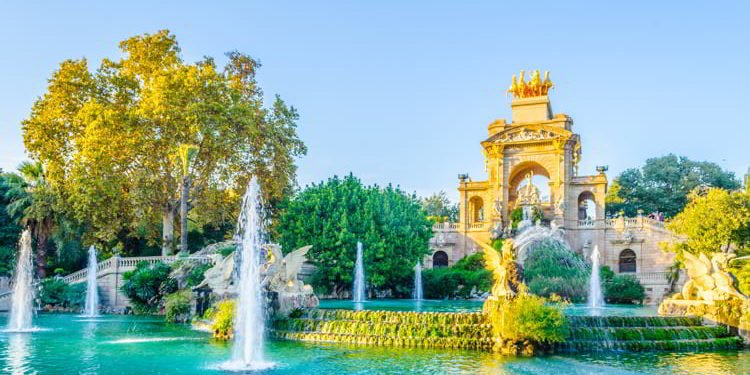Seventeen years ago I flew into sunny, cosmopolitan Barcelona and thought what a great place this would be to live, not for a minute at the time believing that would ever be possible.
Just four years later I had moved to within 20 minutes of Barcelona’s pulsing heart. My daughter was born a stone’s throw from La Pedrera, Gaudí’s famous wave-fronted Modernist a building.
What immediately intrigued me about Barcelona back on my first visit was how quickly and easily you could explore the city—Spain’s second biggest—because of its compact, well-laid-out design, yet there was so much to do and see.
Today, it’s even easier to explore and there’s even more on offer…
Fantastic art and architecture from pre-Roman to modernists and current times abounds. There are galleries, monuments, theaters, restaurants, shopping—all the usual stuff of cities—yet there are also lots of parks and pretty plazas (plaza in Catalan, the language of this region), great beaches, and easy access to the beautiful Costa Brava to the north and the Costa Dorada to the south.
Barcelona is the economic, cultural, and administrative capital of Catalonia, situated in the northeast of Spain, on the shores of the Mediterranean Sea. The city covers a small area but has a large population; 100 square kilometers with about 1.6 million people in the city center and another 4 million in the suburbs. Barcelona also welcomes a huge number of tourists each year.
What struck me most about the city on that first visit was its great vibe and energy, which continue today. People live, work, and shop in most of the city neighborhoods and districts, so each has its own community spirit, and some even have their own fiestas.
More than 150 nationalities live in Barcelona, a reflection of the Catalan peoples’ open and receptive character that foreigners find so attractive. And it’s almost certainly a reason that many gay people call Barcelona home, in fact half of the beautiful Eixample district is called “Gay Eixample.”
The city has 10 districts, but the areas in greatest demand among visitors, property investors, and expats is the oldest part, the Ciutat Vella, which is divided into four districts: La Ribera, also known as El Borne (or, locally, Born), to the north; Barrio Gioco, which is in the central Gothic quarter; El Raval to the south; and the seaside suburb of Barceloneta.
And to those four, I’d add the Eixample (pronounced “eyesham-pla”), Gràcia, on the northern side of the Ciutat Vella, Poublenou in the Sant Marti district, and, for those on a bigger budget, there’s Reina Elisenda in the Zona Alta on the northwest side of the city. Each has its very own flavor, character, advantages, and disadvantages.
Pros of Barcelona
Barcelona has an enviable reputation for health care. There are well-trained doctors galore and many English-speaking ones from several different countries. Consultants in every specialty can be found throughout the city but the Sarrià area close to the University of Barcelona has a particularly high number of practitioners.
In Barcelona you can take your pick: Catalan or Castellano, or both. If you learn Catalan you’ll be right in there with the locals, and if you send your children to a local school you’ll understand the language they are being taught in (at university too).
If you speak Spanish, you’ll do fine but be prepared to get answers back from some people in Catalan.
It’s actually quite easy to read Catalan, if you already speak Spanish, and from there you’ll soon learn to understand it (though I never did get much beyond saying hello/goodbye in Catalan, even though my Spanish is at conversation level and my children attended local schools).
In the tourist areas you’ll find people speak English; however, outside of them it’s a bit of a lottery, so learning the lingo is important.
Of course if you learn Catalan only you’ll find it hard outside of Catalonia where everyone else speaks Spanish.
Barcelona’s metro is fast, easy to navigate, and covers most of the city. Maps are available from tourist offices or any metro station. The main hub for buses is Plaça Catalunya. Pick up a bus map at the underground tourist office there.
Cons of Barcelona
Of course, as with all cities, it has its problems. I think the worst is petty crime of the pick-pocketing variety. You have to be on red alert in every tourist area, on the metro, and at the beach. Don’t carry valuables in backpacks, never sit at a café with your bag on the floor (put it on your knees), and don’t lower your guard when you watch a “magician” on the Ramblas… you’ll walk away with far less than you bargained for.
Some people say that Catalonia’s fight for independence turns some expats off. I think if you go in with your eyes wide open to the possibility of change, you’ll have no problems. Taxes may rise, or fall, but overall expats are unlikely to notice a great change.
I have a very special place in my heart for Barcelona. It’s a vibrant, colorful, proud, interesting place that’s got the benefit of the passion of the Spanish combined with the efficiency and organization of the Catalans.
Call me biased, but I can’t think of anyone who would not enjoy themselves here; single, couple, or family, there’s something for everyone.
Sincerely,
Lucy Culpepper
Europe Insider










